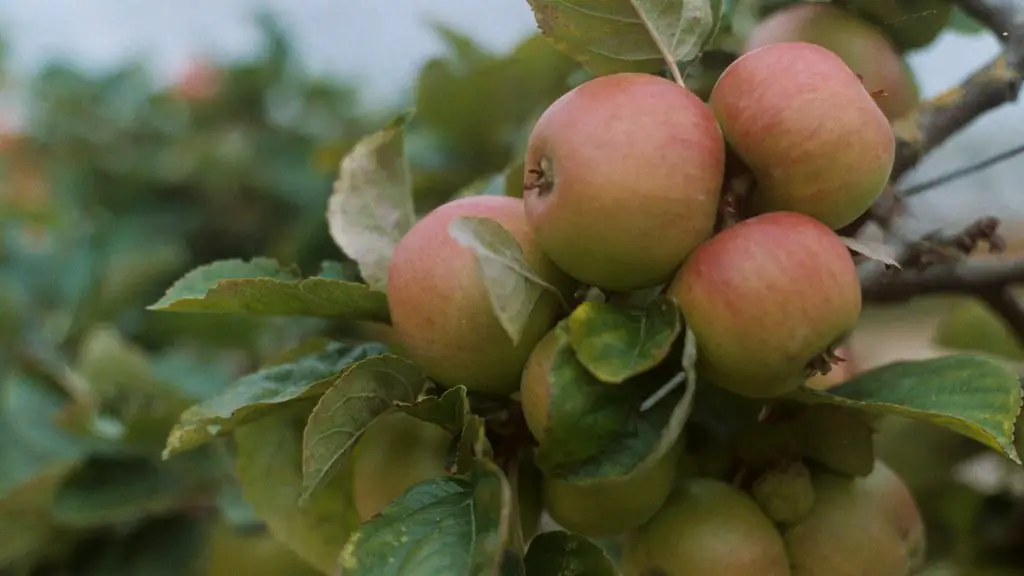Where to Plant Avocado Trees in Texas: An In-Depth Look
Texas is known for its hot and humid climate, which can make it a great place to plant an avocado tree. The avocado is a nutritious fruit with a creamy interior, and it can be eaten as part of a meal or alone as a snack. Growing an avocado tree from seed is a rewarding experience and can be done relatively easily in Texas, as long as certain conditions are met. In this article, we will dive deep into the science behind avocado trees and how to successfully cultivate one in the Lone Star state.
Texas is located within the USDA hardiness zones 8B-10B, making it the perfect climate for the tropical avocado tree. The optimum temperature range for avocado growth is 66°F-92°F, but they can survive temperatures down to high 20°F. Avocado trees require high humidity and need to be planted in well-drained soil with a pH range of 6-7.5. The soil type should also be rich organic matter with plenty of micronutrients, such as nitrogen, potassium, and phosphorus.
To properly plant an avocado tree, you’ll need to select the right tree for your area. You can find a variety of avocado tree cultivars at local nurseries and garden centers that are suitable for growing in Texas. After selecting the tree, dig a hole approximately twice as wide as the tree’s root ball and just as deep. When refilling the hole, make sure not to cover the stem of the tree. Once in place, water the tree thoroughly and mulch the area with organic material.
It is important to keep your newly planted tree properly cared for throughout the year. Avocado trees should be watered twice a week during the summer months and allowed to dry out in between. During the winter and fall seasons, water once a week allowing the soil to dry between waterings. Provide your tree with supplemental nutrients throughout the year and make sure to keep the area around the tree clean.
When selecting a tree, it is important to keep in mind that some avocado cultivars require cross-pollination for proper fruit production. If your tree does need a companion, make sure to choose one that can be planted in close proximity and will be compatible with yours. Generally, all avocado varieties grown in Texas can pollinate with each other.
One final, important note: the avocados may take several years to reach maturity and begin fruiting. An established tree should begin to produce fruits within 2-4 years. With proper care and patience, you can enjoy the fruits of your labor in no time.
When to Plant Avocado Trees in Texas
The best time to plant avocado trees in Texas is during the late spring and early summer months. Planting earlier than this could possibly result in transplant shock, while planting later than this could result in delayed fruiting. The ideal time to plant an avocado tree in Texas is in May or June.
It is also essential to make sure that the soil temperatures are sufficiently warm enough. Once the soil warms up to around 60-65°F, it is safe to start planting. Also, make sure to check the nighttime temperatures before planting, as some varieties tend to fare better in colder weather than others.
When temperatures start to rise, it is important to provide your tree with extra water. This is because an increase in heat can cause soil to dry out faster, leading to stress on the tree. A good rule of thumb is to provide the tree with 1-2 inches of water every 2-3 weeks. Adding a light layer of mulch can also help maintain soil moisture during the hot summer months.
Benefits of Planting an Avocado Tree in Texas
There are many benefits to planting an avocado tree in Texas. For starters, the fruit is loaded with essential vitamins, minerals, and antioxidants. They are packed with dietary fiber, which is important for digestive health, and they contain a solid amount of healthy fats and proteins. Additionally, avocado trees are relatively easy to care for and require minimal maintenance.
In addition to their nutritional benefits, avocado trees can offer invaluable shade during the hot Texas summers. The tree can provide a natural cooling effect, which can keep your yard more comfortable and reduce your energy costs. Avocado trees can also help with air purification, as they absorb pollutants from the air and convert them into oxygen.
Growing an avocado tree in Texas also offers a unique opportunity for young gardeners to learn about nutrition and science. You can use your tree as an educational tool and teach your kids about biology and gardening. This can be a great way to foster a love of nature in the next generation and potentially cultivate a passion for gardening.
Common Mistakes When Planting Avocado Trees in Texas
Common mistakes when planting an avocado tree in Texas can range from incorrect soil conditions to improper watering. When planting your tree, make sure that the soil is deep and well-drained. This will ensure that the root system can grow properly and access all the nutrients it needs.
It is also important to note that over-watering can be just as damaging to your tree as under-watering. You should never let your tree’s soil become waterlogged as this can lead to root rot and other problems. Make sure to check the soil moisture periodically to ensure it is neither too dry nor too wet.
When planting your tree, it is also important to make sure you place it in an area of your yard that gets plenty of sunlight. Avocado trees need full sun to thrive so make sure to pick an area that receives 6-8 hours of direct sunlight per day. This will ensure that your tree gets enough light and heat to grow successfully.
Best Practices for Caring for an Avocado Tree in Texas
To ensure your tree grows properly, it is important to follow best practices when caring for it. Proper pruning and trimming can help promote healthy new growth and should be done every year. Pruning should focus mainly on removing dead or diseased branches and thinning out any overcrowded areas.
Inspecting the tree for any signs of pests or disease is also important. You can use organic insecticides and fungicides if needed to ensure that your tree stays healthy. Make sure to check the undersides of leaves occasionally as this is one of the typical spots where pests like to hide.
In addition to pruning and pest control, fertilizer is also an important part of caring for your avocado tree. A balanced fertilizer with an N-P-K ratio of 10-10-10 works well and should be applied in small doses throughout the year. It is also important to keep in mind that young trees require more fertilizer than mature trees.
Additional Considerations When Planting an Avocado Tree in Texas
When planting an avocado tree in Texas, it is important to keep in mind that the Lone Star State is home to several types of wild animals. These can include feral pigs, coyotes, and armadillos, all of which can do damage to your tree if left unchecked. To protect your tree, make sure to build a sturdy fence around it and regularly check for any signs of animal activity.
Another important consideration is climate. While Texas is generally well-suited for the cultivation of avocados, it can occasionally experience bouts of extreme weather. Severe droughts, intense heat waves, and heavy rainfalls can all negatively impact your avocado tree and limit its growth. Make sure to keep a watchful eye on the weather and take appropriate measures to protect your tree in the event of extreme weather patterns.
Finally, it is important to keep in mind the local climate when selecting the variety of avocado tree that best fits with the area you live in. Different varieties have different temperature and soil preferences and will do better in some climates than in others. Learn about the various types of avocado trees that are suited for Texas and choose the one that is best for you.



